The Great Pyrenees and the Labrador Retriever’s designer pup is also known as the Pyrador. This gorgeous designer dog is the mixed breed topic of this article. The Great Pyrenees Lab mix is a unique mix of the Great Pyrenees and the Labrador. They’ve become very popular over the last several years. If you are thinking about welcoming him into your family, by the end of this guide you’ll know exactly what this breed is all about. This is a bigger dog, so you’ll need to do some research to find out if this pup is the right fit.
You might know this big guy by another name, such as the Lapyrenees, Labrenees or the Pyrelab. Whatever name you know him by, he is a larger than life dog in both terms of size and personality. With one of his parents being the most popular dogs in America, and the other parent being a much rarer breed, you can be sure that you’ll be the talk of the neighborhood with this mix.
He is a fabulous combination of protectiveness and socialness. Pyradors can be both playful and calm. He requires a lot of exercise and a large space to roam outside. If this is something you can offer him, then he might just be the designer breed for you! Wondering if he is the right mix for you and your family? Let’s find out!
Parent Breeds
The key to understanding the Pyrador is to learn and understand both of his parent breeds. Being a relatively new designer dog, it is more than likely that he will be a first-generation pup. Maybe a second generation. This means that his appearance and temperament can still vary and be somewhat unpredictable.
For this reason, you need to be sure that you like all his genetic possibilities and both parents! If there is a characteristic that you aren’t keen on, then you need to consider getting another mix, but let’s take a closer look!
Great Pyrenees

The Great Pyrenees is not one of the most popular breeds for families. This has historically been due to their combination of size and affordability/availability. This breed is, however, becoming increasingly popular as new dog owners learn about the breed. This is why there also seem to be more Great Pyrenees mixes.
He is considered a giant dog breed measuring between 25 and 32 inches in height. He weighs 85 pounds and above, often exceeding 150 pounds. The Great Pyrenees is described as smart, patient, and calm. They make wonderful family pets with the right family and environment.
The Great Pyrenees is also an ancient breed. They are thought to have been taken to the mountains between France and Spain, known as the Pyrenees Mountains. In this location, they were used to protect flocks of sheep from wolves and other hungry beasts. Over time, he has become synonymous with the region. Despite his ability to be ferociously protective, he is super calm and gentle in the family home. He is one of the original gentle giants in the canine kingdom. Unlike the Lab, the Great Pyrenees aren’t known for their intelligence.
Labrador Retriever

The Labrador Retriever is much more well-known and has long been a favorite family pet. This guy was bred in the 19th Century in Newfoundland, Canada (no, not Labrador as commonly thought!) He was primarily bred to be a hunting dog who worked on the water collecting fish and small water animals for his hunting master. Labs are a large breed weighing between 55 and 80 pounds and measuring between 21 ½ to 24 ½ inches.
He is described as friendly, active, and outgoing, and he needs intense exercise daily. Sure to keep you on your toes, he makes a great family pet just as long as you can spend a lot of your time with him.
Pyrador

Now you know a little about both of his parents, let’s take a closer look at what you can expect from the Great Pyrenees Lab mix. Typically when you have a mixed-breed pup, you can expect that the merging of the two will produce a dog that pulls traits from both parents.
But most mixes do tend to inherit more traits from one parent over the other. This makes designer dogs somewhat unpredictable. The good news is that the Pyrador has two parents that have similar looks and sizes. This means you can rely on some form of predictability with this outcome. You’ll find that temperament, and some other traits are slightly different.
Temperament
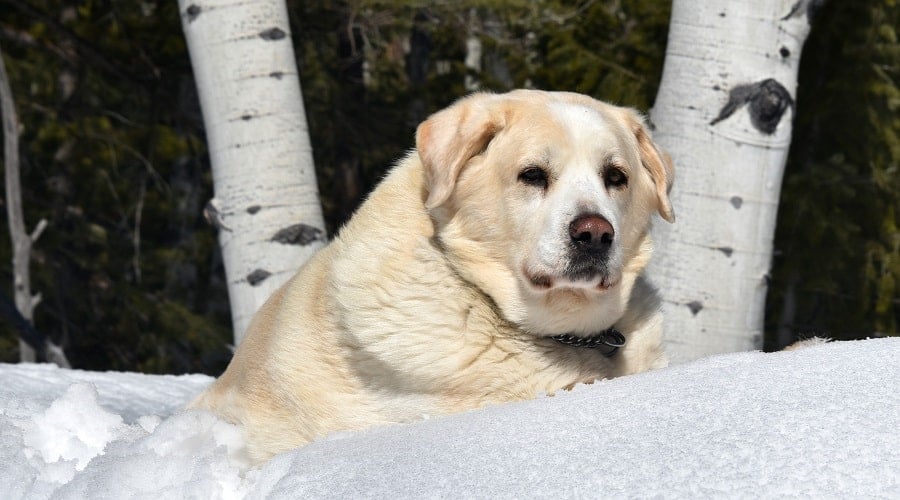
The Pyrador is bound to be protective of his family. They inherit their flock protection heritage from their Pyrenean roots. While he may not need to protect you from wolves, he might not be the most welcoming to the delivery person (which is why the training section of this article is important!). However, with family friends or those who come over regularly, he will warm up to them over time. The Pyrador will eventually display a social and playful character.
His Pyrenees parent is a nocturnal breed at heart. You may find the Pyrador a little hard to settle down at bedtime as a result. They are typically always on the lookout for intruders. However, with a little training and his Labrador influence, he should easily settle. But, nonetheless, you can expect him to bark at the bats and the owls and any strange humans in the early hours of the morning. This is great if you are after a watchdog!
With his family, he will have plenty of canine cuddles to dish out. This big fluffy pup will love a cuddle and belly scratch whenever they can get them. You’ll need a big sofa, or accept that you’ll have a heavy lapdog. Either way, you’ll be warm for sure!
Similar to other Labrador mixes, he will also be very energetic throughout the day. The Pyrador loves to play fetch with his humans. This is where you will see his Retriever parents’ fun side in action. Once you have worn him out, though, if there is no one around to give him attention, he’ll happily take himself off to his bed or crate and snooze for a few hours.
Size & Appearance

What you can be certain of when it comes to the Pyrador is that he will be a large-sized dog. He will measure between 23 and 28 inches from paw to shoulder. Depending on the gender, Pyradors weigh anywhere between 70 and 120 pounds.
The Pyrador’s jowls are likely to be slightly droopy. Their muzzles are a little square in shape with a big dark fleshy nose. The Pyrador’s ears will be triangular and large, although they may flop down or stand erect. Their tails will be thick and long, and their large eyes brown or blue. Pyradors always carry themselves with confidence.
Coat & Colors

His thick and fluffy double coat will definitely keep him warm even in the coldest of conditions, and he would happily live in a super cold climate. He will sport any color of either parent, which could mean white, cream, yellow, brown, or black. It is likely that he will take one solid color as opposed to a mixture, but you can never be fully sure with a crossbreed. More than likely, due to both breeds having a lighter coat variant, your Pyrador is likely to have short or fluffy white fur.
Because both of his parents are working dogs from colder climates, you can be sure that his coat will shed heavily during shedding season, and moderately throughout the year, so if you don’t approve of dog hair then this guy is not the breed for you.
Exercise & Living Conditions
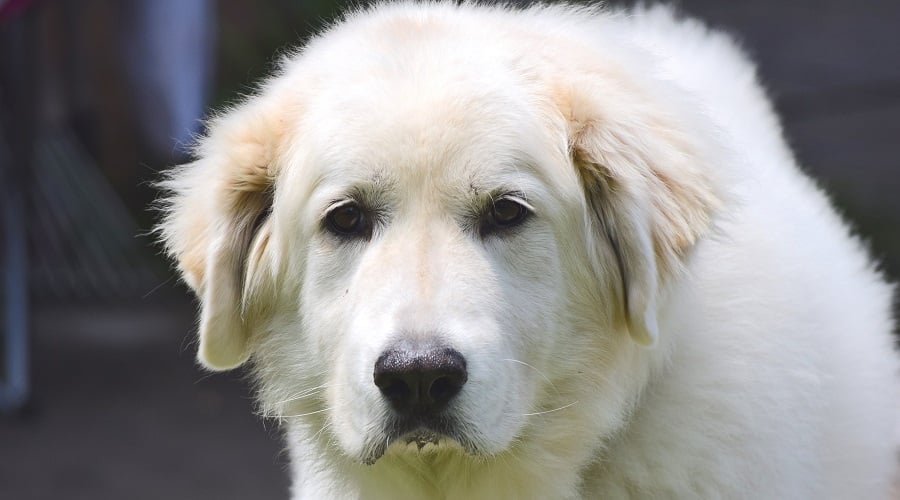
With his European parent having the freedom to roam the Pyrenees Mountain range and his Labrador parent having access to the great waters of Newfoundland, you can expect that the Pyrador will appreciate a large outdoor space to roam in, play in, and just be. Because of his potential to be protective, his outdoor space must be reinforced with high fences, not a shared or communal space. His home should be large enough to accommodate his big size.
This guy will need around 60 minutes of exercise every day, and the intensity of his activities will depend on which parent he takes after most. If he is more like his Lab parent, he will need a mixture of more strenuous and interactive activities, whereas if he is more like his Pyrenees parent, he’ll prefer calmer exercise. Either way, 1 hour a day means he will need to be placed with an active family, no matter the weather forecast.
This guy will do well with other household pets just as long as he is socialized well as a pup. He will also likely have an affinity for the smaller and younger members of the family, and you will find him sitting guard next to them as they play. Just be sure to supervise him with children around simply because of his size.
Training

Having a protective streak, his obedience training is imperative if you want him to be a well-balanced and polite family addition, so you need to invest time into his training regime from day dot.
One of the most important aspects of the Pyrador’s training is socialization. Without it he may treat every moving thing as a Wolf, so you have got to expose him to a variety of situations, with unfamiliar humans and animals of all shapes and sizes, both inside and outside of his home.
He also needs a pack leader that can be firm with him straight away, so that he understands his place in the pack and that he is not the boss. It is important for the whole family to be on board with his training too.
Thankfully, the Pyrador has intelligent and loyal parents, both of which make training much easier than a stubborn pooch. His Labrador parent is much more trainable and loves snacks, so hopefully, he will take after him. However, if he is more like his Pyrenees parent, he may not always be in the mood for a training session. Either way, consistency and persistence are key when it comes to training, as is the positive reinforcement method.
Health

The Pyrador is a relatively healthy mixed breed whose life expectancy is between 10 to 12 years. Being a mixed breed, he could inherit the health concerns of either parent, so here are the most commonly known health concerns:
Hip & Elbow Dysplasia: This is caused by the abnormal formation of the hip and elbow joint, which can be inherited from either of his parents or because he is such a big pooch, it could also be triggered by rapid bone growth as a puppy. It can eventually lead to paralysis in later life, so it is important to see his parent’s hip scores and feed him the correct nutrition.
Eye conditions: He could inherit a variety of eye conditions, such as late-onset Progressive Retinal Atrophy (which is a particular type of PRA in the Labrador breed), Cataracts, or Entropion.
Patella Luxation: This happens when the kneecap is dislocated from its normal position on the thigh bone.
Looking into pet health insurance while your pup is young may be a good idea. Insurance can be helpful in emergency situations. Additionally some carriers offer Wellness plans, which help with routine and preventative care.
Nutrition

The Pyrador is likely to eat around 3 cups of kibble every day, dependent on his size and energy levels. Being a large dog, it is important to feed him high-quality kibbles that are specifically designed for large breeds, as they contain the optimal ingredients to control bone growth. If your Pyrador is on the larger side, food made for their Pyrenees parent will be best. Rapid bone growth can cause many health issues in large dogs and can increase the chances of Hip and Elbow Dysplasia, so all-breed kibbles should be avoided.
It is also important to monitor the amount of food that the Pyrador eats because he will be somewhat of a food fanatic, especially if he inherits his Lab parent’s appetite. Obesity is also common in the Lab breed, and this needs to be avoided at all costs.
Grooming
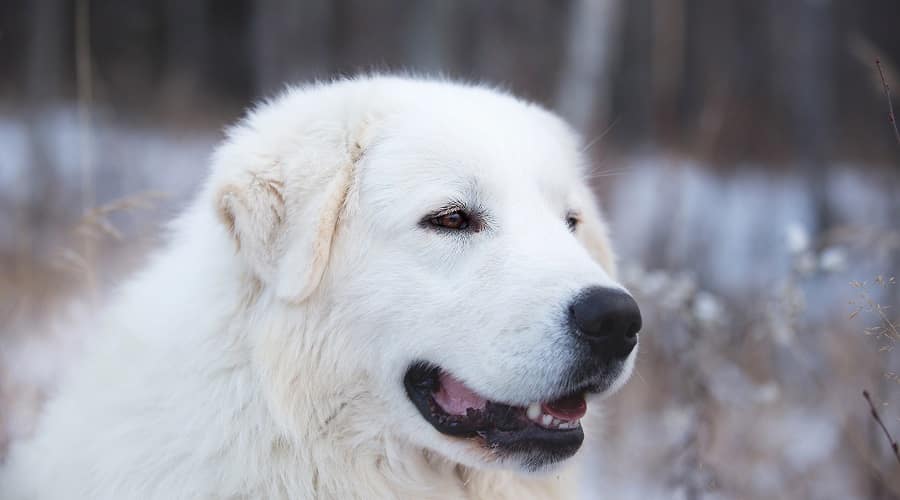
His thick double coat, with a dense undercoat and thick and fluffy top layer, means that you need to invest in a good set of grooming tools. A deshedding tool will be your best friend and keep your house and clothes as hair-free as possible.
A bath once every 8 to 12 weeks will be plenty for the Pyrador, because his coat is dirt-resistant and relatively clean. Refrain from washing him more than this; otherwise, you risk damaging his natural coat oils.
Regular ear cleaning will also be required because of his large ears, so be sure to clean his ears twice a week to prevent infections or a buildup of wax which can be quite painful for him.
Puppies & Breeder Costs
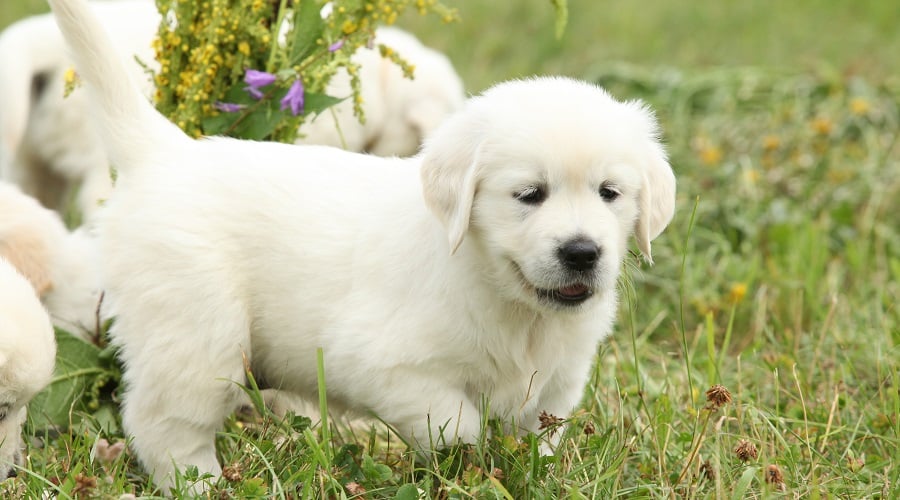
The cost of a Pyrador puppy from a reputable breeder will start from around $1,000 but can reach upwards of $1,500, dependent on his parentage, size, and location. A larger pup from a state with fewer breeders around will be more expensive than a smaller pup from a state with less demand.
The Pyrador is a relatively new designer dog, and as such, you should expect to travel a little to find a reputable breeder that you are happy to work with. Begin your search for a Pyrador breeder online, and check out their website and online reviews before contacting them.
Whoever you choose, once you have made contact with them, be sure to meet the breeders, pups, and their parents in person, and request to see all health certificates and hip scores.
As Family Pets
- The Pyrador is a large to giant dog breed.
- This mix will need plenty of indoor and outdoor space.
- The Great Pyrenees Lab mix will be a great guard dog.
- This mix can be protective of their family due to their genetics.
- Invest in the time to train your Great Pyrenees Lab mix.
- Their Lab parent means they will enjoy newcomers with proper intros.
- He is well suited to young families and multi-pet households.
- The Great Pyrenees Lab mix loves to look after their family.
- It is crucial to socialize him as a puppy to make sure he’s balanced.
- You’ll want to guarantee at least an hour per day of exercise.
Rescues & Shelters
Why not head out to your local rescue center to see if there is a Pyrador up for adoption? If there isn’t, try contacting a few other local shelters before traveling to them. If you still struggle to find a Pyrador in a generic rescue center then be sure to check out dedicated breed rescue centers where he may be more likely to be found.
The Great Pyrenees Rescue Club of America lists dedicated breed rescue centers state by state, and the American Labrador Rescue list contact details of their volunteers too.
Final Thoughts
The Pyrador is a fantastic family dog that offers the best of both canine worlds. They are friendly and affectionate with their families. They can be a little protective too. As long as you can offer them space, time, and training, the Great Pyrenees Lab mix will love you more than you can possibly imagine.


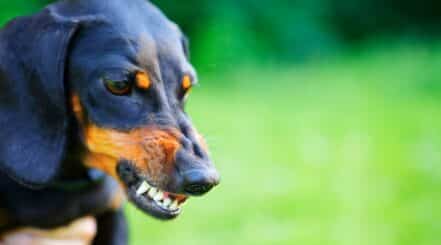
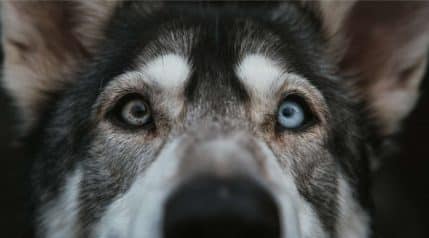

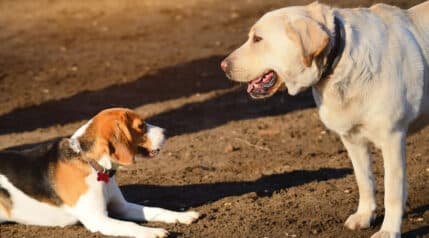
Have 80 acres for a black lab/Pyrenees female puppy to be friends with our lab/Pyrenees female.
Our revised brindle Labrador was bred by a great white pyrenees. What will the color be of the puppies?
This is a great and informative article !!!
I have a pyrador named Sadiemae. She is 65 pounds and a great dog. Sadiemae is loveable, protective and loves kids.
We have two female sisters that are 9 months old. They “wrestle” and “rough-house” very often. They do not physically hurt each other; they just roll and growl. They do stop when the command is given. However, they are so bonded to each other it would be heartbreaking if one outlives the other. They need to be in sight of each other at all times or there is a lot of whining. Weights are 59 and 54 pounds right now. They do believe they are lap dogs and are jealous if one is getting patted or hugged and not both. The bigger pushes the smaller away to get the attention. The girls have chewed everything in the fenced yard including the fence, boat trailer wiring and tail lights, etc. One is a digger in spite of the precautions placed at the bottom of the fence. Pretty smart and can be fairly stubborn. There is never a dull moment.
In October I went and got the last Pyador puppy in a litter, was surprised my first pick was still there and told owner if people don’t show call me. The next day I picked him up too. I now have two 5 month toddler pyadors. They are so amazing I love them so much. I have fibromyalgia and they know my bad days and will chill more on those. My only concern is someone told me siblings will fight as adult is this true? They are so close to each other that I can’t imagine them ever fighting. When they play if one get a little loud I will tell them to calm down and they listen well. I can’t even imagine ever separating them. Some one please tell me this isn’t true. Thank you
I think it’s just awful that breeders are breeding every dog with a Labrador, they are freaks of nature
when you do this. Leave each breed alone! What a shame to mess with nature to make money!
The price of a cross-bred dog is insane. In my opinion it’s a shame!
Um all domesticated dogs have been bred to be designed a certain way… So you might as well yell at everyone who started feeding the wolf… Also with people who want a specific breed and high demand caused a lot of breeders to inbreed to satisfy people who demand “purity” as you are now and made some of these breeds have the health problems they do…. Did you know they brought the St Bernard back from almost extinction by assing great Pyrenees breeding? It’s possible that designer breeds are saving canines from such a short life
Hi…. literally just got Pyrenees/lab mix few hours ago…. he’s..10 mths.old….. A guy had got him, kept him 1 day…. brought to a shelter.
I can’t believe how smart he is! A little stubborn walking, and didn’t like stairs, but all good!
My question is:
What are thoughts on food brands? I was thinking of either making own food or mixing store bought and freeze dried??
Here are recos for Great Pyrenees: https://www.loveyourdog.com/great-pyrenees-dog-food/ .
We strongly recommend the fresh-made foods that can be delivered to your home, specifically The Farmer’s Dog mixed with rice you make at home. It is our top recommendation in the article above for Adults. You can also read more about it here: https://www.loveyourdog.com/farmers-dog-review/
We rescued our 1 yr old male Pyrador from a townhome in SLC. We have a large fenced yard and thought it would be ok but hubby has MS and isn’t too steady on his feet. Dog loves to lean on you and he practically knocks hubby over. Sad to say we aren’t able to keep him. Just too much dog for a disabled person. Where can we find this sweet boy a new home in Utah? Can anyone help?
Why doses my found on the road great Pyrenees/golden retriever eat all my paperwork should I say important paperwork
I have a Pyrador and she is AMAZING. She sheds CONSTANTLY, more matter how much I brush her. She is very smart and protective! I wanted to comment and say that my girl had hip dysplasia as a puppy and we went to our local feed store and got her some powder that was all natural and it healed her completely after about 2 years of use. Also, she developed heat intolerance, got lazy and could not go for long walks, etc. Get their thyroid function checked! That was my Lilly’s problem and something vets do not normally check “because it cost $60” per my vet. I told them I did not care I wanted her better! So they checked and that’s what the problem was. She has been on meds for over a year and has gotten back to her healthy, playful self! Hope this helps someone!
Got our pyrador pup from PAWS. Don’t regret it a bit. A couple of months after we got him, we go a 10-week-old Siberian Husky. They get along very well and won’t let us go without taking them for a walk for a little over 2 miles a day. The Pyrador is fantastic with the family and grandkids, but has the independent streak of his ancestors. Both dogs will chase each other around the yard and play when they get bored. Of the two, the husky has been the most difficult to train. Pyradors do make great dogs and he is one of the best we have had in our family. If you decide to get one, please check for a rescue first, as breeding farms are often terrible places.
Thank you for sharing. Your pups sound like they are a part of a loving family!
Just received 4 yr old Pyrador less than a week ago. I had no idea it was a pyrador til the next day, Father full and mother 50/50. I thought I was picking up a 50 pound golden mix based on the pics I received, (longer story) I was a little surprised when I picked him up. This 105# beast slowly came straight to me with his head down, I had gotten down on one knee the moment I saw him and he buried his very large cranium into my chest. He had me hooked so I took him anyway, the other family were in tears so I high tailed it. I had to lift his back legs to get into the vehicle. He seems to still be depressed. Heavy panting after exercising 20 minutes 3 to 4 times a day. He seems to be happier trotting, to which I can barely keep up for 100 feet before having to slow it down before he pulls me chin up down the road. He was hesitant or needed help getting up and down our 2 steps, but now a few days later he’s doing better and actually took real steps up which at the time was a feat. I’m male 6″1′ 215 lbs, I do have some ailments but he’s stronger than I am on a walk. If there’s a squirrel it’s a lot to keep him at bay. If it’s a dog on the other side of a fence, I can’t keep him from putting his nose on that dog – the whole time barking high hell and squealing like a crying hound. He’s beautiful and great with my family – all he does inside is lay around panting and letting everyone crawl all over him and pamper him.
What do we do? We wanted to get a pound, rescue, or re-home. But, this is a lot to take in.
I feel like I should send back where I got him from. Is it possible if he has some health issues he just needs to exercise more? I want to hope it’s just muscle weakness as opposed to dysplasia. I can get him more exercise if that’s what he needs. But, dysplasia on this dog we just got, that seems like a long haul and why does he have so young?
Thanks for having this forum
DJ
Only your vet can help you determine next steps when it comes to health concerns. We wish you and your dog the best, DJ.
Hi Dj, I have a 1-year-old Pyrador as well! We just had to take ours to the vet due to extreme heat exhaustion even though she is an inside dog and is only allowed outside for bathroom breaks and walks. Some signs were that she was panting all the time, loss of appetite, and extreme weakness. Pyradors need a lot of interaction but they also need to stay cool. Hope this helps.
We just adopted a dog that appears to be a Pyrador, and he, too, needs help getting up and down steps and into our low-to-the-ground car. He won’t get in his crate unless we lift his front feet over the one to two-inch barrier. With him, the issue appears to just be temperament. He’s slow and reluctant but cooperates with patience and bribery. Might that be the case with yours?
I have a Great Pyrenees/Golden Retreiver. This dog barks a lot!!! Even with lots of socialization. The most loving dog ever. Must comment that she sheds a good deal throughout all seasons. My friends all love her. Fantastic with kids.
Sounds like a great pup, Gary! Thanks for stopping by to share!
I read your article with fascination after having my Bella as part of our pack for 11 1/2 years. When I read the part about the Pyrenees side not being particularly bright I had to laugh because that’s SO Bella! She is the best big sister to my 3 cats & yellow lab Heidi & sheltie/corgi Roo. Also when my daughter died unexpectedly at home Bella helped me, literally, as I was performing CPR by continuing to lick her face until the paramedics arrived then quietly stepped aside which had amazed me in retrospect. Absolutely the best combination of 2 breeds out there if you’d into large furry lovebugs!
Sounds like a great pup, Rose! Thanks for stopping by to comment!
Good article. We just got our puppy 2 months ago. He was 10 weeks when we got him. We have always had large dogs. Our pup loves the grandchildren. We usually adopt but we were having a hard time finding a puppy.
My granddaughter has tourettes and I was worried about getting an older dog. The puppy has taken to her and protects her already. I couldn’t be happier. He can be a handful but is learning and growing rapidly. He is so lovable. I am glad we made this choice. I believe he will be well-mannered, protective, and lovable.
Sounds like a great dog, Elaina! Thanks for stopping by to comment!
We’ve had a yellow lab great pyreness mix for 12 years. Yes they Shed. They Shed everyday and no matter how much you brush them they keep on shedding. But what a great breed. One of the best dogs I’ve ever had. He’s my fishing buddy, I hook em and he lands em. Getting old and will be gone soon. Hope I can find another one after he’s gone.
Sounds like an awesome dog, Charles! Thanks for stopping by to comment!
We adopted our Pyrador from a local shelter 11 years ago. He has fit every description in this great article. We have 10 grandchildren and he has adored each one but has been content to live with Grammie and Grampie as his primary pack. We are having to euthanize him this week due to his recent health issues and are heartbroken…when we are ready this is definitely a breed we will look for again!
Sounds like a great dog, Susan! Thanks for stopping by to share your experience!
I have a Pyrador pup 9 weeks and he is already just about showing all of these behaviors. He’s been a great addition for my 4 yr old with mild autism. He’s already intently watching him and playing with him.
Hi Kristin, thanks for stopping by to share your story about your pup with our readers! Sounds like a great dog!
Very informative. This has been very helpful. We’ve had yellow labs and Golden retrieves for 25 years. We are considering a Pyrador. We will try reaching out to some breeders and shelters. Thanks!
Glad you found it helpful Wes! Good luck with your search!
My wife and I adopted a 2-year-old Pyrador from the ASPCS. She was rescued from a puppy mill in Kentucky, had a litter of puppies in her early life. We had her nurtured and all shots were given before she came home. Bonnie is a joy, timid and cautious probably due to her early life but she isn’t aggressive and does well with our 2 cats and our grandchildren.
Sounds like an Awesome dog Craig! Thanks for stopping by to share your experience!
Our family has recently adopted a female great pyrenees lab puppy through Adopt a pet. We have never obtained a pet without a meet and greet before. Previously, we have raised a bullmastiff, mastiffs from puppies that we obtained from breeders, so we were aware of large breed dogs and had a good idea of what to expect.
This puppy was bottle-fed since 3 weeks of age along with her siblings as the mother was struck by a car and killed. This puppy has turned out to be a great fit in the family and would do it again. Had the dog to our vet yesterday, and got a clean bill of health and confirmed that she is a great Pyrenees Lab mix.
The only down side is the fact of the limited info on the parents, but the dog is healthy and get’s along with our two older dogs and she has found a home. I would recommend Adopt a pet to anyone, the experience was great, got delivery to Ohio from NC and the adoption process was pretty painless, and the dog is going to be a great addition to the family.
Sounds like a great experience and a great pup Ronald! Thanks for taking the time to stop by and comment!